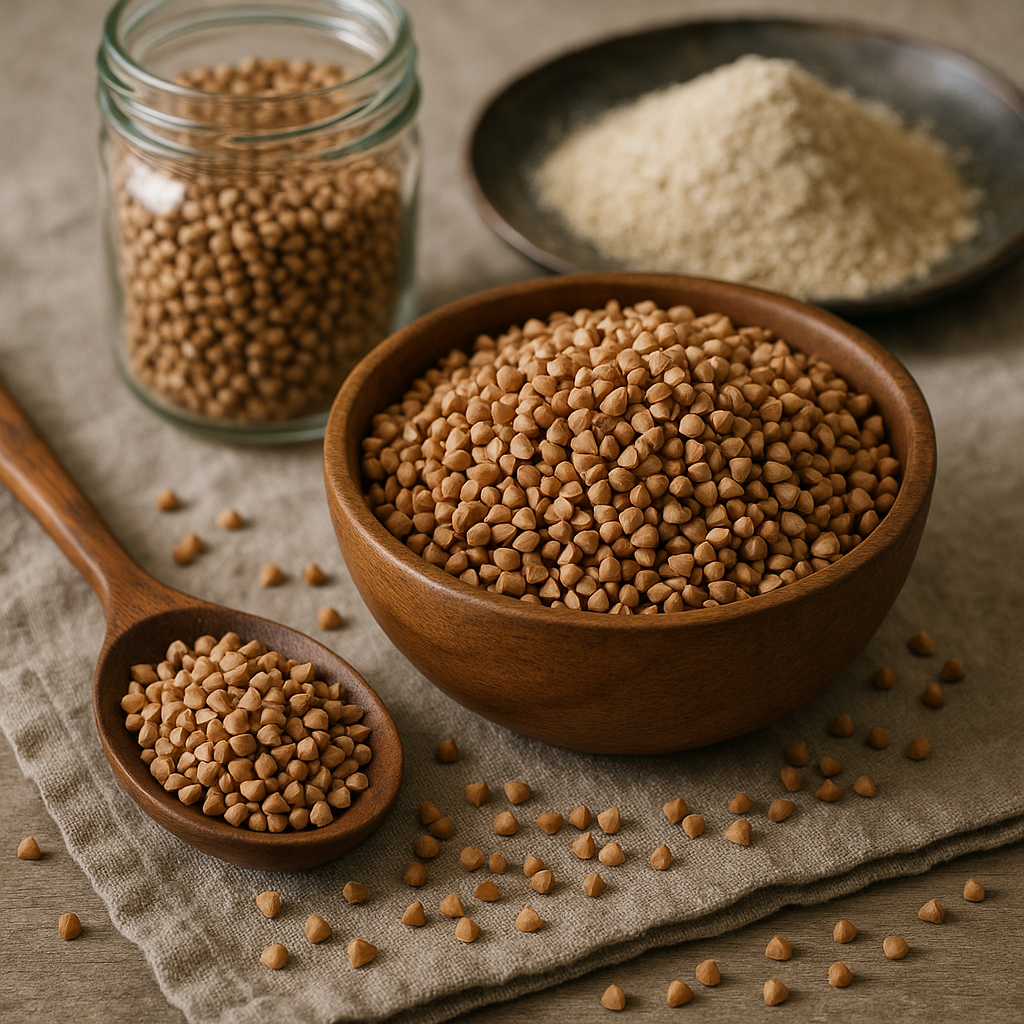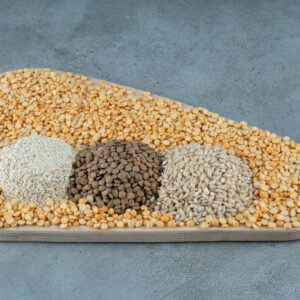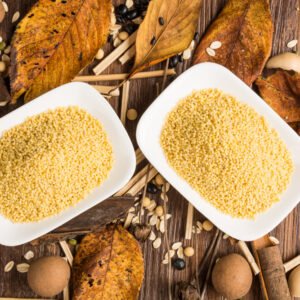Did you know that nearly 95% of Americans don’t consume enough dietary fiber daily? While we often hear about the importance of whole grains, two powerhouse options stand out for their exceptional fiber content and nutritional benefits: buckwheat and millet. These ancient grains have sustained civilizations for thousands of years, and today’s nutrition science reveals why they deserve a prominent place in our modern diets.
Despite their similar names and shared reputation as nutritional superstars, buckwheat and millet are distinct grains with unique properties. Both offer impressive fiber profiles that can transform your digestive health, support weight management, and reduce the risk of chronic diseases. Understanding why these Buckwheat Millet High Fiber Grains are considered among the best choices for health-conscious consumers can help you make informed decisions about your dietary choices.
Understanding Buckwheat: The Pseudocereal Powerhouse
Buckwheat isn’t technically a cereal grain at all—it’s a pseudocereal, meaning it’s a seed that’s used like a grain. Raw buckwheat per 100 grams has 343 calories, protein 13.3 grams, carbohydrates 71.5 grams, fiber 10grams and fats 3.4 grams. This impressive nutritional profile makes buckwheat a standout choice for those seeking high-fiber alternatives to traditional grains.
By weight, fiber makes up 2.7% of boiled groats and is mainly composed of cellulose and lignin, which are particularly beneficial for colon health. When you prepare buckwheat as groats (hulled buckwheat kernels), you’re getting a substantial fiber boost that supports digestive wellness.
The fiber content in buckwheat is remarkable when compared to other popular grains. This ancient “grain” supplies about six grams of dietary fiber in every one-cup serving, making it an excellent choice for meeting daily fiber requirements. Some sources indicate even higher fiber content, with Buckwheat provides 17 grams of dietary fiber per cup depending on preparation methods and serving sizes.
The Unique Benefits of Buckwheat Fiber
What sets buckwheat apart from other high-fiber grains is its particular combination of soluble and insoluble fiber. Soluble fiber This helps slow down the glucose absorption and contributes to digestive health, making buckwheat an excellent choice for blood sugar management.
Buckwheat is rich in fiber. Fiber allows for regular bowel movements and reduces the potential for experiencing symptoms such as constipation. A diet high in fiber is sure to protect your digestive health. This protective effect extends beyond basic digestive comfort to long-term colon health and disease prevention.
Research shows that eating buckwheat may help lower cholesterol levels and keep blood sugar levels in check, benefits that are largely attributed to its high fiber content and unique nutrient profile.
Millet: The Ancient Grain Making a Modern Comeback
Millet represents another category of high-fiber grains that deserve attention. Millets are gluten-free grains that are rich in antioxidants, soluble fiber, and protein. In particular, they may lower cholesterol and blood sugar levels. This makes millet an excellent complement to buckwheat in a high-fiber diet strategy.
Like buckwheat, millet offers substantial fiber benefits. Grains high in fiber include bulgur, whole wheat pasta, kamut, spelt, pearl barley, quinoa, teff, buckwheat, brown rice, oatmeal, cous cous, millet, and cornmeal (grits), placing both buckwheat and millet among the top fiber-rich grain choices available.
The versatility of millet makes it an practical addition to various meals throughout the day. From breakfast porridges to dinner side dishes, millet provides consistent fiber content that supports digestive health and satiety.
Why High Fiber Grains Matter for Overall Health
The health benefits of incorporating Buckwheat Millet High Fiber Grains into your diet extend far beyond digestive comfort. “A higher fiber diet, in general, can help prevent heart disease, diabetes, high cholesterol, and help aid in weight management. Incorporation of buckwheat in the diet is an excellent way to reduce chronic conditions as it is an essential component of a well-balanced diet”.
A high fiber diet promotes gut health and healthy gut bacteria, while decreasing the risk of heart disease, colon cancer, and other serious medical conditions. This research-backed evidence demonstrates why choosing high-fiber options like buckwheat and millet can be transformative for long-term health outcomes.
The fiber in these grains works through several mechanisms:
Digestive Health Support: Fiber increases the bulk of the food and helps prevent constipation problems by speeding up bowel movements through the gut. Fiber also binds to toxins and aid in their excretion through the gut and, thereby help protect colon mucosa from cancers.
Cholesterol Management: Also, dietary fibers bind to bile salts (produced by the liver), helping to remove excess cholesterol from the body and supporting cardiovascular health.
Blood Sugar Regulation: The soluble fiber in both buckwheat and millet helps slow glucose absorption, preventing blood sugar spikes and supporting metabolic health.
Practical Ways to Include Buckwheat Millet in Your Diet
Incorporating these Buckwheat Millet options into your daily routine is easier than you might think. Buckwheat can be used as groats for hot cereal, ground into flour for pancakes and baking, or used as a substitute for rice in various dishes.
Millet works excellently as a rice alternative, can be ground into flour for baking, or cooked as a creamy porridge. Both grains are naturally gluten-free, making them suitable for those with celiac disease or gluten sensitivity.
Start by substituting buckwheat or millet for rice in one meal per day. Gradually increase your intake as your digestive system adjusts to the higher fiber content. This approach helps prevent digestive discomfort while allowing you to experience the full benefits of these nutrient-dense grains.
Quality Matters: Choosing Premium Buckwheat and Millet
When selecting buckwheat and millet products, quality sourcing makes a significant difference in nutritional value and taste. Look for suppliers who specialize in premium agricultural products and maintain strict quality standards throughout the supply chain.
CMS Industries, as a leading agricultural products manufacturer and supplier in India, understands the importance of delivering high-quality grains that retain their nutritional integrity. With operations established for two decades in Gujarat, they recognize the value of connecting consumers with premium agricultural products that support healthy lifestyle choices.
The company’s commitment to ethically sourcing their global exports of organic grains, including various high-fiber options, ensures that consumers receive products that meet international quality standards. Their focus on sustainable farming practices and quality assurance helps maintain the nutritional density that makes grains like buckwheat and millet so valuable for health-conscious consumers.
The Science Behind Fiber Requirements
Understanding daily fiber needs helps put the benefits of buckwheat and millet into perspective. The current daily value (DV) for fiber is 28 grams, yet most people fall significantly short of this target. Including just one cup of cooked buckwheat can provide approximately 17-20% of your daily fiber needs, making it an efficient way to bridge this nutritional gap.
The fiber in whole grains like buckwheat and millet is particularly valuable because Whole grains are rich in nutrients and have high levels of bran, giving them high amounts of fiber. This natural fiber is more beneficial than processed fiber supplements because it comes packaged with other essential nutrients like protein, B vitamins, and minerals.
Comparing Fiber Content Across Grains
When evaluating the best high-fiber grain options, both buckwheat and millet consistently rank among the top choices. A full serving of whole grains — 16 grams of whole grains — will contain from just over a half gram of fiber to around 3 grams of fiber, but buckwheat and millet exceed these averages significantly.
The superior fiber content of these grains becomes even more impressive when you consider their complete nutritional profiles. Unlike refined grains that have been stripped of their fiber and nutrients, whole buckwheat and millet retain all their natural components, providing maximum health benefits per serving.
Supporting Your Health Goals with High-Fiber Choices
Whether your goals include weight management, improved digestive health, better blood sugar control, or reduced disease risk, Buckwheat Millet options can play a crucial role in your nutrition strategy. High-fiber foods help to fill you up and hastens the transit of food through the digestive tract. This is important for regulating bowel movements and supporting overall metabolic health.
The satiety factor of high-fiber grains like buckwheat and millet makes them excellent choices for sustainable weight management. Unlike low-fiber alternatives that leave you hungry shortly after eating, these grains provide lasting satisfaction that can help reduce overall calorie intake naturally.
Conclusion
The evidence is clear: buckwheat and millet stand out as exceptional choices among Buckwheat Millet High Fiber Grains for their superior nutritional profiles and health benefits. With their impressive fiber content, complete protein profiles, and versatile culinary applications, these ancient grains offer modern solutions to contemporary health challenges.
Incorporating these nutrient-dense options into your diet doesn’t require dramatic changes—start with simple substitutions and gradually increase your intake as your taste preferences and digestive system adapt. The long-term benefits of improved digestive health, better blood sugar control, and reduced disease risk make this dietary investment worthwhile.
Ready to explore premium buckwheat and millet options for your healthy lifestyle? CMS Industries offers high-quality agricultural products that meet international standards for purity and nutritional value. Contact their team to learn more about their range of organic grains and how they can support your health and wellness goals through superior agricultural products.
Frequently Asked Questions
Q1: What is the difference between buckwheat and regular wheat in terms of fiber content?
Buckwheat contains approximately 17 grams of fiber per cup compared to wheat’s 23 grams, but buckwheat is gluten-free and offers superior protein quality with all essential amino acids.
Q2: How much fiber do buckwheat and millet provide compared to other grains?
Both buckwheat and millet rank among the highest fiber grains, with buckwheat providing 6-17 grams per cup and millet offering similar amounts, significantly exceeding refined grain options.
Q3: Can eating buckwheat and millet help with weight management?
Yes, the high fiber content in both grains promotes satiety, slows digestion, and helps regulate blood sugar levels, all of which support healthy weight management when part of a balanced diet.
Q4: Are buckwheat and millet suitable for people with gluten sensitivity?
Both buckwheat and millet are naturally gluten-free, making them excellent alternatives for people with celiac disease or gluten sensitivity who want high-fiber grain options.
Q5: How should beginners start incorporating these high-fiber grains into their diet?
Start by replacing rice or pasta with cooked buckwheat or millet 2-3 times per week, gradually increasing frequency as your digestive system adapts to the higher fiber intake.





